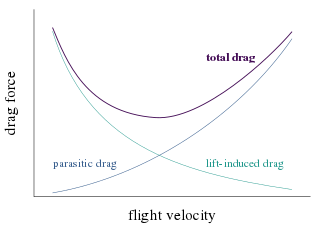"The wing lift formula shows that lift of a wing is proportional to its area".
That's absolutely true. However a wing generates both lift and drag. Drag is of two natures: Parasitic drag and lift-induced drag. The sum of all drag is the total drag:

Source: Wikipedia
Induced drag decreases with speed, and has its origin in wing tip vortices. Vortices actually increase the velocity of the downwash, and changes the effective angle of attack. Which in turn changes the direction of the aerodynamic force, creating a force opposing to the direction of flight:

Induced drag, source: Wikipedia
Induced drag being due to tip vortices, if we can make vortices less efficient, then we also reduce induced drag. The way to do that is to have long wings, so the the downwash from the vortices affects only a part of the wing:

Tip vortices, source: Wikipedia
Research demonstrated that the induced drag is dependent on the wing aspect ratio, not only on the wing span. This can be understood easily: The quantity of air in a tip vortex is larger when the chord is large.
So the answer to your question is: Yes lift is proportional to the wing area, but the lift/drag ratio is proportional to the wing aspect ratio. That's why longer wings are preferred, they minimize energy lost in fighting drag.
"Why are most conventional wings shaped the same (swept back rectangles)?"
Longer wings are better for fuel efficiency, but we have other problems in the designer queue, and some can be solved by selecting the wing planform, e.g.:
We want to prevent the stall to be abrupt (at the expense of creating less lift though):

We want to delay the creation of a local supersonic flow in supercritical wings used in commercial airliners. When flying at M 0.8, airflow is accelerated to produce lift, some areas of the wing reach supersonic speed (Mach > 1). The associated shock wave creates an additional drag. By sweeping the wing we add a spanwise component to the airflow which decreases the chordwise velocity, so the shock wave appears only to a higher aircraft airspeed:

On the other hand, the sweptback wing tends to stall at the tip first, which is not good at all, as when a stall appears we need ailerons to prevent it from worsening, and ailerons are located at the tips to increase their effectiveness. So swept wings are also twisted so that the tip angle of attack is smaller than the root one, forcing the stall to start at wing root.
Wings planforms are multiple, each type of wing, or sometimes subcomponent, can improve a particular issue (possibly creating another that will be less important for the designer). See this very interesting article on Wikipedia: Wing configuration





